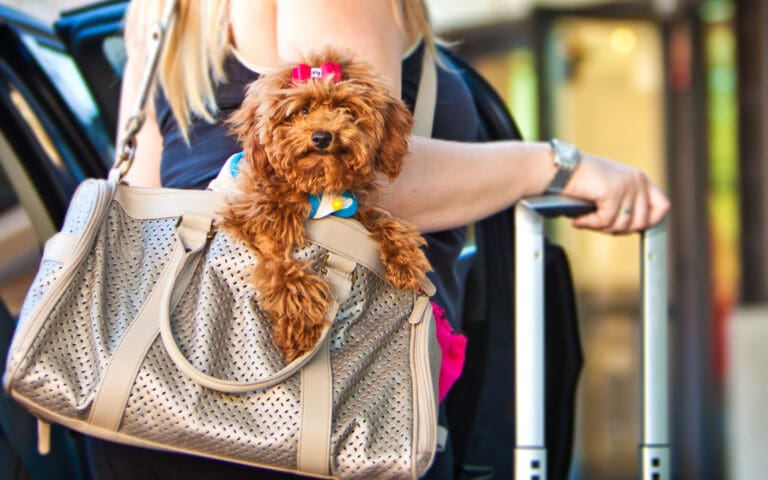Flying with pets in 2025 comes with more rules and more confusion.
As more travelers take their furry companions along for the ride, airlines have tightened their policies across the board. From rising fees to tougher carrier requirements, knowing the latest airline pet policies isn’t optional but essential.
Whether your copilot is a cat, a dog, or a certified service animal, here’s what you need to know before takeoff.
In-Cabin Pet Policy: What’s Changed?
Many U.S. carriers now limit in-cabin pet spaces more than ever.
Delta’s pet policy now caps in-cabin animals to just two per flight in some cabins, and American Airlines’ pet fees jumped to $150 per direction (up from $125). Most airlines still only allow small dogs and cats, typically under 20 pounds, including the carrier.
Pet weight limits for cabin travel are strictly enforced. If your pet plus carrier exceeds the limit, they’ll need to fly in the cargo hold if allowed at all.
Pet Carriers: Size Limits and Requirements

Soft-sided, airline-approved pet carriers are now the standard across most major airlines.
These carriers must be leak-proof, well-ventilated on at least two sides, and small enough to fit under the seat in front of you, typically around 18″ x 11″ x 11″. Most importantly, your pet should be able to stand, turn around, and lie down comfortably.
Carrier size limits can vary, so always check your specific airline’s guidelines. Delta and United, for example, have different maximum dimensions. If you’re flying internationally, review pet passport requirements, which may include microchipping, rabies vaccination, or even quarantine.
Learn more about flying with your dog for additional tips.
Pet Travel Fees by Airline Carrier
Here’s a quick glance at pet travel fees on major U.S. airlines in 2025:
| Airline | In-Cabin Fee | Cargo Fee (If Allowed) |
|---|---|---|
| Delta | $150 | Starts at $200+ |
| American Airlines | $150 | Varies by route |
| Southwest Airlines | $95 | No cargo option |
| Alaska Airlines | $100 | Cargo ends April 2026 |
Note: Not all airlines allow pets as checked baggage anymore. Cabin pet restrictions also include limits on how many animals can be on a single flight, so booking early is key.
Emotional Support and Service Animal Policies
Gone are the days when emotional support animals (ESAs) flew freely. Following 2021 DOT changes, ESAs are now treated as regular pets—not service animals.
If you’re flying with a service dog, prepare to submit updated service animal documentation in advance. Airlines may require:
- DOT Service Animal Air Transportation Form
- Proof of training and behavior
- Veterinarian certification for health and vaccinations
Learn more from the U.S. Department of Transportation, which outlines current airline rules and guidelines for service animals.
Rabies Rules and CDC Entry Requirements
For international pet travel, new 2024 rules from the U.S. CDC apply starting August 1, 2024. If your dog is coming from a high-risk rabies country, you’ll need:
- Rabies certification for travel
- Microchip ID
- Entry via a CDC-approved U.S. airport
- Dog must be at least 6 months old
Traveling from a low-risk country? The process is easier, but proof of good health is still required.
Ready for Takeoff?
2025 brings a wave of new pet travel regulations, and staying informed is key.
From in-cabin pet policy updates to international travel requirements, planning means fewer surprises and a safer, smoother flight for you and your furry companion.






